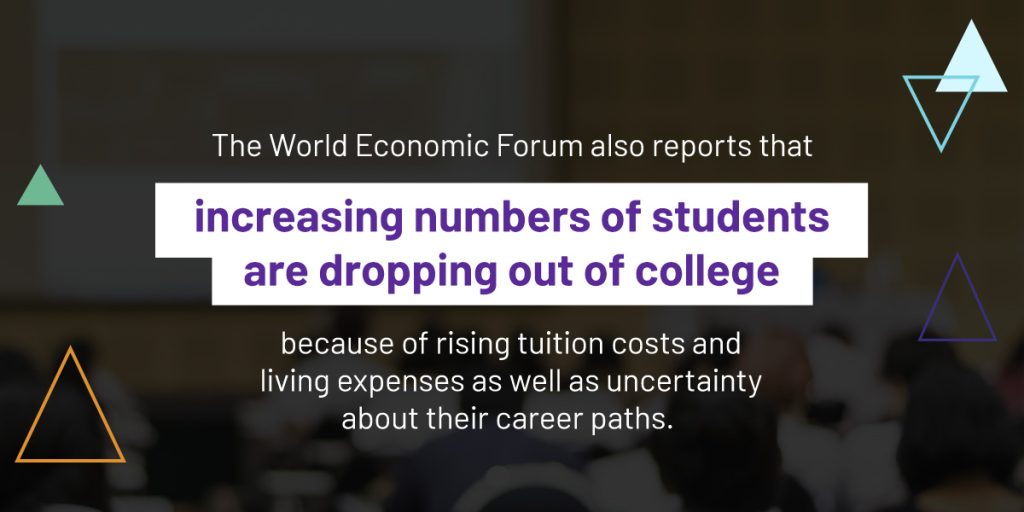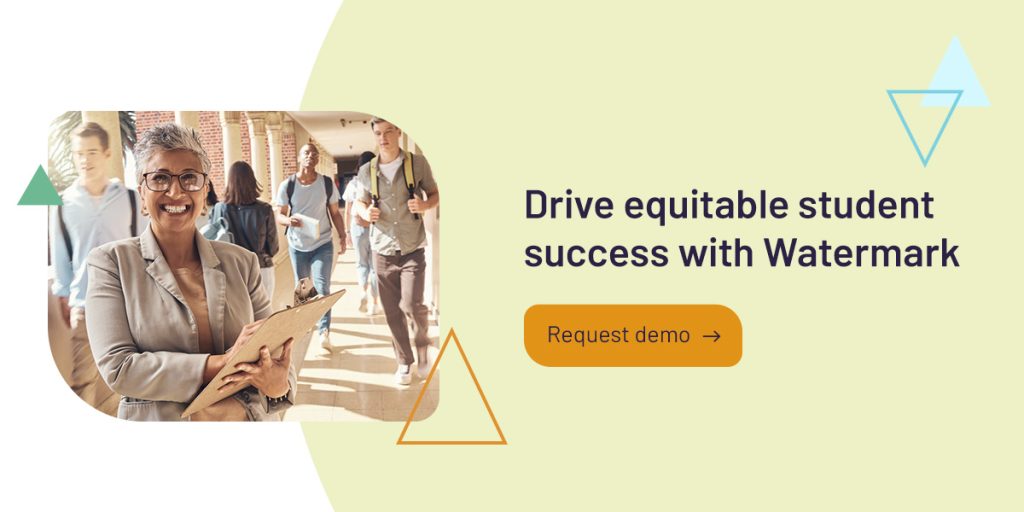
Many people in the United States believe in the “American dream” — the idea that if they try hard enough, every American can and will achieve success and upward mobility. America, after all, is the land of opportunity. However, some opportunities are unevenly distributed in favor of the wealthy and educated. Marginalized Americans, including people of color and those from lower socioeconomic backgrounds, often face challenges in achieving their dreams.
The first step in creating real opportunities for everyone in this country is expanding access to high-quality education. Racial and ethnic gaps in higher education have been well-documented. While many institutions have shared plans for diversity, equity, and inclusion (DEI), a 2022 report from McKinsey & Company found that only 8 percent of higher education institutions have equal representation among students.
Closing achievement gaps by providing access to higher education is vital to building a stronger, more equitable nation. Among higher education institutions, community colleges have a unique role and opportunity to help drive equitable success for the students who will become the future leaders of America.
The intensifying need for equality in community college
With the ethnic demographics of the U.S. becoming increasingly diverse, the student population in the American education system is shifting as well. Racial and ethnic diversity changed significantly from 2010 to 2020, leading to new generations with a greater proportion of people of color, but several ethnic groups remain underrepresented in higher education.
According to the National Center for Education Statistics, people between 18 and 24 years old enrolled in higher education institutions at a rate of 39 percent in 2022. The highest enrollment rate among any race or ethnicity category was 61 percent for Asian students. White students were in second place at 41 percent, followed by Black and multiracial students, each at 36 percent, Hispanic students at 33 percent, and Native American students at 26 percent.
As older workers retire and a more diverse workforce takes their place, people from historically underserved communities with growing populations need resources to achieve their educational and career goals. The U.S. education system must adapt to meet these needs.
Many institutions are rising to the opportunity and focusing more on including minority populations. For example, the University of Michigan achieved a 37.8 percent increase in enrollment of Black, Indigenous, and People of Color (BIPOC) undergraduate students from 2016 to 2021. Initiatives to invest in the success of students from underrepresented communities are vital for closing the education gap, and America’s demographic shifts present an urgent opportunity to prioritize these initiatives.
How community college increases equality
A higher education degree can significantly improve a graduate’s earning potential and career prospects. In 2020, the Bureau of Labor Statistics found that a person’s median usual weekly earnings generally increase with higher educational attainments. For example, people with a professional degree earned a median of $1,893 weekly, while those with less than a high school diploma earned $619. The unemployment rate was 11.7 percent for those with less than a high school diploma but only 2.5 percent for people with a doctoral degree.
Higher earning potential and lower unemployment rates are just two benefits of higher education. The Pew Research Center found that higher education graduates with a parent who also graduated were less likely to incur debt obtaining their education. The report also showed that the children of a college graduate are more likely to receive an inheritance than those whose parents have less education.
The generational wealth people can build through education impacts their families for decades. This means whether higher education institutions succeed in diversifying their enrollment will directly impact whether the equity gap narrows or widens in our lifetime and in the coming generations. With graduation being so influential for improved life outcomes, improving student success and retention can play a major part in shaping a more equitable future.
Why community colleges are crucial for closing the equity gap
Community colleges have long been the backbone of securing academic success for students of color and low-income communities. Public, two-year community colleges are significantly more affordable than four-year institutions, which lowers the barrier to entry into higher education. These institutions offer higher education to students who may not have the financial support from parents or the academic foundation to attend a four-year school.
Two-year colleges also often have an open-access mentality that helps students hone skills, attain a degree, or transfer to another institution to continue their education. Many students may return to their communities to work in a skilled trade or local business. In these cases, community colleges are a building block for improving their local community economies.
Partly because of their affordability and accessibility, community colleges welcome diverse students who have historically experienced marginalization from four-year programs. Community colleges are positioned to meet marginalized individuals where they are and equip them with the career-ready qualifications and skills they need for enhanced economic mobility.
Community colleges are often undervalued in the higher education system. However, community colleges are the backbone of higher education, helping students advance to four-year institutions, earn degrees, or complete certificate programs at their institutions.
7 ways to promote community college equality for student success
Community college students, particularly those from lower-income families and families of color, often face challenges outside of their studies that hinder their academic success. These barriers include attending underserved high schools and missing academic and extracurricular opportunities because of their socioeconomic circumstances. The World Economic Forum also reports that increasing numbers of students are dropping out of college because of rising tuition costs and living expenses, as well as uncertainty about their career paths.

Given their role in helping communities thrive, community colleges must leverage effective strategies to recruit diverse students and help all their students succeed, including:
- Financial support: Financial concerns are among the most common reasons people drop out or avoid enrolling in higher education, and financial aid and merit awards can help address these concerns. If the community college has insufficient funding to meet financial aid targets, local businesses may be willing to sponsor bursaries for students in programs related to their industry. Financial literacy workshops can help students manage their income and expenses efficiently while studying.
- Mentorship programs: Mentorship from senior students, alumni, or faculty is especially helpful to first-generation students needing guidance to navigate academic and life challenges. These mentor-mentee relationships can also help keep students engaged.
- Flexible options: Prospective students have varying circumstances and responsibilities to balance with their class schedules. Flexible scheduling, online or hybrid teaching modes, and child care facilities make studying at your institution feasible for more students.
- Career readiness: Aligning your community college’s curricula to industry needs can help attract career-minded students and set them up for lasting success after graduation.
- Collaborative learning: Introducing collaborative learning methods in the classroom can help develop soft skills, maintain engagement through peer relationships, and support learning comprehension.
- Cultivating inclusivity: Recruiting diverse faculty, investing in accessibility services, and representing diverse perspectives in curricula can foster an inclusive campus where all students feel welcome.
- Targeted interventions: Student success software with predictive and prescriptive analytics based on participation, grades, and other engagement metrics can alert faculty to at-risk students and guide supportive interventions to help those students persist.
Drive equitable student success with Watermark

Given the shifting demographics of America’s student populations, community colleges are well-positioned to be the catalyst for closing the equity gap for students of color and low-income students in this country.
One way community colleges are working to close the equity gap is by providing at-risk students with the resources they need to achieve their academic goals. By using data-driven programs and technology such as Watermark Student Success & Engagement, community colleges can leverage predictive analytics and integration tools to help at-risk students meet academic milestones before problems arise. Using data-driven insights to guide early interventions, community colleges are empowered to see their students succeed.
Request a free demo of Student Success & Engagement today to see how timely insights can boost student success at your community college.

















































































































































































































































































































































































































